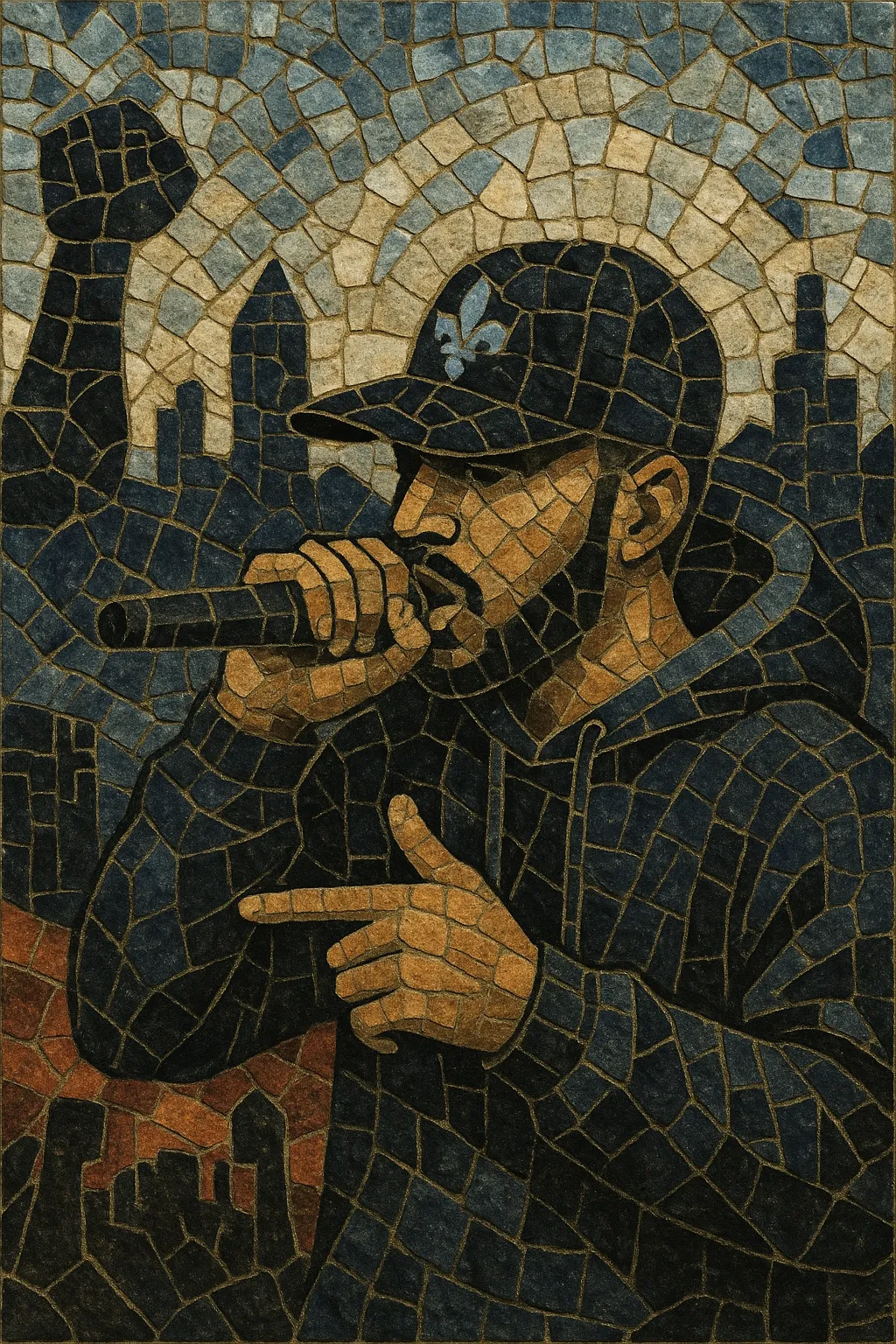Rap québécois is the French-language hip hop of Quebec, Canada, characterized by its distinct blend of local slang (joual), French, English code-switching, and influences from the province’s diverse diasporas (notably Haitian and Maghrebi communities). It places a strong emphasis on identity, language politics, and everyday urban realities, often folding in humor, sharp wordplay, and regional references.
Musically, it spans sample-based boom bap and jazz-inflected beats to trap, drill, and club-ready hybrids. Crews and collectives have long driven its scene culture, while battles, cyphers, and a thriving live circuit in Montreal and Quebec City helped forge an unmistakable flow, accent, and attitude that set it apart from both U.S. and European francophone rap.
Rap québécois emerged in the 1990s as local artists began adapting North American hip hop to Quebec’s linguistic and cultural context. Dubmatique’s success helped legitimize francophone rap in Canada, while pioneers like Sans Pression and Muzion set a gritty, boom bap–rooted template that reflected Montreal’s multicultural neighborhoods.
Through the 2000s, the scene matured with acts such as Loco Locass foregrounding political and linguistic identity, and independent labels and venues supporting a growing ecosystem. Artists refined a distinctly Quebec flow and vocabulary—mixing joual, standard French, English, and Caribbean influences—while expanding production from jazz-soul sampling to harder street sounds.
The 2010s brought broader visibility. Collectives like Alaclair Ensemble and Dead Obies experimented with franglais and avant-leaning production, while solo artists such as Koriass and Loud reached mainstream audiences. Streaming, festivals, and media support enabled a wave of albums that balanced accessibility with local specificity.
A trap-leaning and sometimes drill-influenced generation emerged, with artists like Souldia, FouKi, and others pushing darker 808-driven beats, melodic hooks, and street reportage. The scene diversified stylistically—from soulful conscious cuts to club-primed anthems—without losing its regional voice.
While culturally rooted in Quebec, rap québécois engages with global hip hop currents (U.S. East Coast, French rap, dancehall, and trap). Its distinct charm lies in the interplay between global hip hop grammar and local language, humor, and politics, making it a unique node in the francophone rap world.


